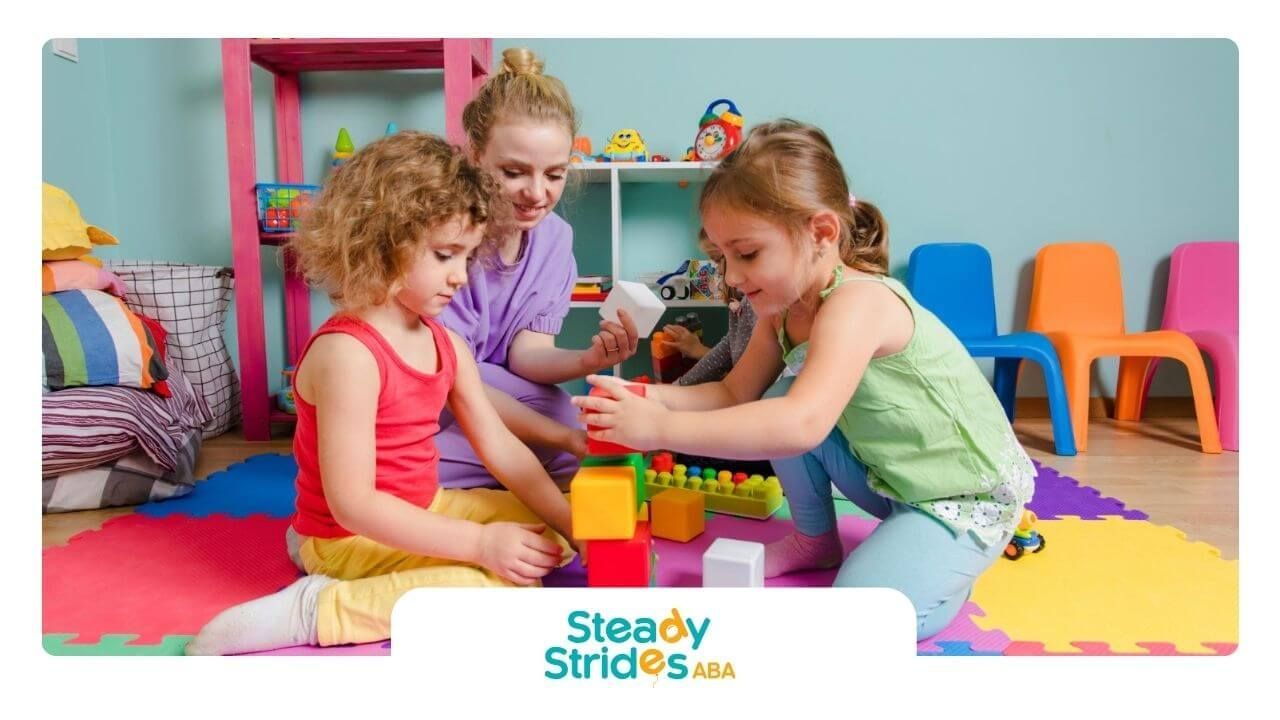If you’ve ever wondered what a Board Certified Behavior Analyst (BCBA) actually does all day, you’re not alone. Many families in the autism community hear the title often but don’t really know what goes on behind the scenes.
The truth is, a BCBA wears many hats — teacher, coach, data nerd, and cheerleader — all focused on helping children make meaningful progress through Applied Behavior Analysis (ABA) therapy.
Designing Individualized ABA Programs
Every day for a BCBA starts with one main goal: creating and fine-tuning a personalized therapy plan for each child. Using assessments and data, they identify skills to build — like communication, social interactions, or daily living routines — and problem behaviors to reduce.
Each plan is tailored to the child’s unique strengths, needs, and environment. No two programs look the same, because no two children are alike.
Training and Supporting the Therapy Team
A BCBA doesn’t usually spend the entire day running therapy sessions themselves — that’s where Registered Behavior Technicians (RBTs) come in. The BCBA trains and supervises RBTs, ensuring they’re delivering therapy effectively and consistently.
They might observe sessions, give feedback, and adjust teaching strategies based on how the child is responding. It’s part coaching, part mentoring — and it makes a huge difference in therapy quality.
Meeting with Families
A big part of a BCBA’s day involves working directly with parents and caregivers. They teach families how to use ABA strategies at home, celebrate progress, and provide guidance when challenges come up.
These meetings are crucial because parents are a child’s most important teachers. That’s why ABA parent training is such a key part of services at Steady Strides ABA.
Collecting and Analyzing Data
Data might not sound exciting, but for BCBAs, it’s everything. Every goal, every session, every small success is tracked and analyzed. This helps the BCBA make data-driven decisions — adjusting goals, changing teaching methods, or celebrating progress when the data shows real growth.
Collaboration and Problem-Solving
BCBAs often collaborate with teachers, therapists, and doctors to create well-rounded care for each child.
Whether it’s working on behavior plans in a school-based ABA setting or coordinating home-based autism care, teamwork keeps everyone moving toward the same goal — helping the child thrive.
At Steady Strides ABA, BCBAs work closely with families across Texas and New Mexico, offering services in homes, schools, and center-based programs in Houston. We also provide autism assessments and hands-on parent support to create lasting results.
The Heart of It All
A BCBA’s day is busy, but their mission stays the same: helping children with autism reach their full potential. Whether they’re analyzing data, training therapists, or celebrating a child’s first words, every moment counts.
Want to learn more about how a BCBA can help your family?
Reach out to Steady Strides ABA today to connect with a compassionate team dedicated to progress, growth, and real-world results.
FAQs
What does a BCBA do in ABA therapy?
A BCBA designs and oversees behavior plans, supervises therapists, collects data, and supports families to help children meet developmental goals.
Do BCBAs work directly with kids?
Yes — they often observe sessions, model strategies, and interact with children during assessments or skill teaching, though RBTs provide most daily therapy.
How can parents work with their child’s BCBA?
Through ongoing communication and participation in ABA parent training, parents learn how to support therapy goals at home and reinforce progress every day.
Sources:
- https://pmc.ncbi.nlm.nih.gov/articles/PMC6834806/
- https://www.bacb.com/bcba/
- https://bouve.northeastern.edu/news/board-certified-behavior-analyst-definition-and-responsibilities/
- https://gsep.pepperdine.edu/blog/posts/how-to-become-a-behavior-analyst.htm
- https://www.thechicagoschool.edu/insight/career-development/bcba-guide-bcba-certification-exam/













